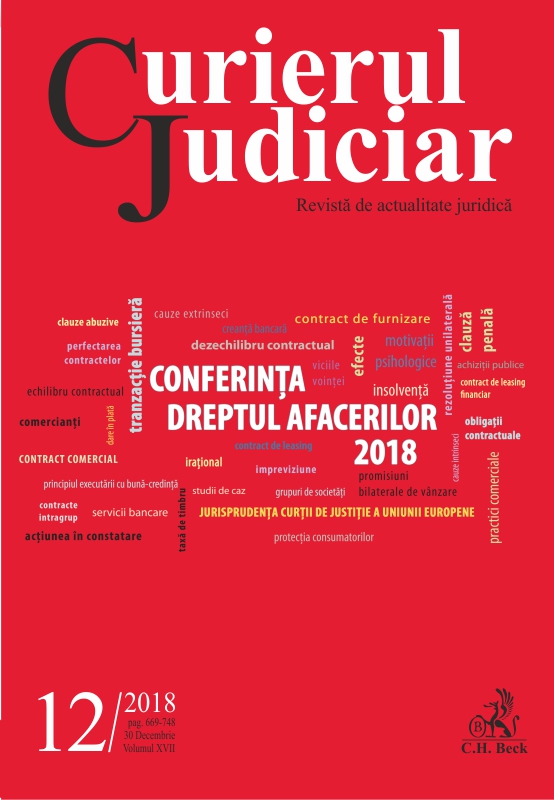Stingerea creanței bancare prin darea în plată
Payment of bank receivables
Author(s): Andrada-Georgiana Popescu-DragomirSubject(s): Law, Constitution, Jurisprudence, Law on Economics
Published by: C.H. Beck Publishing House - Romania
Keywords: payment; Law no. 77/2016; payment notification; debt notification; suspension; restitutio in integrum;
Summary/Abstract: Law no. 77/2016 distinguishes between two actions of different qualification and identical finality, respectively: verification of the admissibility conditions provided by art. 4 of the law. In both situations, the legislator regulated a prior procedure, namely the notification made by the debtor. The debtor’s action is, in fact, an act of accomplishment, which seeks to substitute the creditor's agreement for the realization of the procedure regulated by art. 8 par. (5) of Law no. 77/2016. In those circumstances, it is important to determine the extent to which the court can verify the conditions of admissibility in the debtor’s action. The legislator did not expressly regulate the possibility of appealing against a notification based on art. 8 par. (5) of the Law no. 77/2016, which is relevant for the purposes of the creditor's appeal against the notification. Thus, a distinction has to be made between the payment notification (Article 5) and the debt notification due to the forced execution of the building (Article 8). The actions regulated by Law no. 77/2016, respectively the creditor's appeal and the debtor's action, although pursuing the same purpose, have a different qualification. The creditor's appeal has been characterized by judicial practice as an invaluable activity, in which only the admissibility conditions are examined. The qualification of the debtor's action is distinct, precisely in view of the purpose pursued by the debtor. In view of the distinct qualification, we must analyze the admissibility of the appeal, referring to the decisions of the Constitutional Court no. 369/2017, no. 454/2018 and the decision of the HCCJ no. 52/2018. Law no. 77/2016 also establishes the effect of the suspension, which was intended to be total in time and space, both in respect of payments and of the possible judicial or extrajudicial proceedings being initiated by the creditor. The legal characterization of the suspensive effect is relevant as well as the legal consequences of the measure, depending on the creditor's decision to challenge or not the payment notification. Besides, the legal risk assumed by the debtor is also interesting, as the parties have returned to the previous situation.
Journal: Curierul judiciar
- Issue Year: 2018
- Issue No: 12
- Page Range: 740-743
- Page Count: 4
- Language: Romanian
- Content File-PDF

